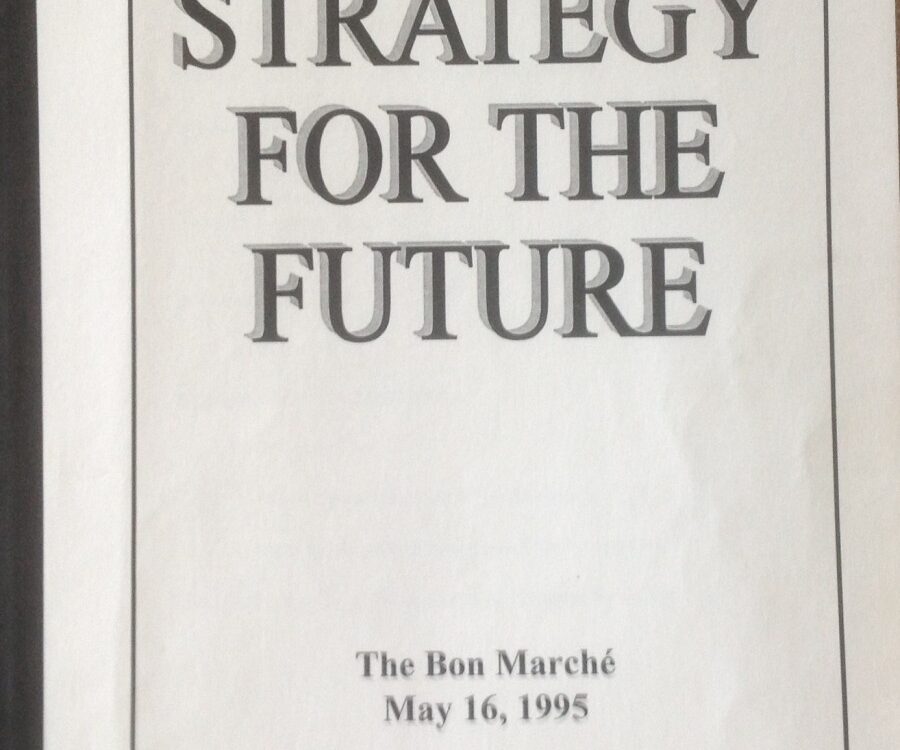THE FOUR PILLARS OF
JUSTICE BASED POLICING
REGIONAL INTERVIEWS ON JUSTICE BASED POLICING
AND THE LEED COMMUNICATION MODEL
THE INTERVIEW PROCESS
In conjunction with the Washington State Criminal Justice Training Commission (CJTC) effort to understand how the leadership of the law enforcement agencies in WashingtonState views the initiative of the LEED Communication Model.
The following pages are my effort at summarizing the voice and tone of these conversations. I came away from these conversations believing that this is not a new initiative –but it is a defining moment in declaring that these four tenants of communication behavior are the basics of what law enforcement leadership in the state of Washington want to support as the Standard of good law enforcement communication. I also believe that this group is genuine in believing the time for this initiative is now.
in the month of August, I interviewed 16 regional Chiefs and Sheriffs asking 3 basic questions:
- What do you believe this communication model is really about?
- Why do you believe it is important to do something?
- How should the CJCT proceed with this effort and what ideas would you suggest to make this effort successful?
Overall impressions:
Everyone interviewed believed that a renewed focus on communication skills was important and needed to be done.
The most common conversation from What is this effort was: “this is what good cops have always done.”
The most common conversation about Why is this important was: “Officers are safer if they know how to communication well. De-escalation and citizen interactions should be at the lowest level of the law.”
THE FOUR PILLARS OF
JUSTICE BASED POLICING
Listen and Explain with Equity and Dignity
King County Sheriff Sue Rahr
Seattle Police Chief John Diaz, and
Washington State Criminal Justice Training Commission
JUSTICE BASED POLICING
Our current state of law enforcement can probably be best described with this statement: “People don’t care so much about crime stats; they care about how they are treated”. This article will discuss why that matters and what we can do about it.
Professor Tom Tyler of New YorkUniversity has done extensive work in this area under the rubric of Procedural Justice and Police Legitimacy. Simply stated, this means that a critical, and sometimes neglected, part of law enforcement’s legitimacy and effectiveness is impacted by the perception of fairness and justice by those we serve. This dynamic is especially important in minority communities.
It explains why, after three decades of dramatically falling crime rates, improved training, and widely used community policing strategies, public perception of police has not improved.
Justice Based Policing is a strategy to improve the quality and outcome of interactions between police and citizens while improving officer safety. Over time and across multiple interactions it strengthens community trust and confidence in the police and increases future cooperation and lawful behavior by citizens.
Justice Based Policing is not a new idea. It’s not a program. It’s not complicated. It’s the way good cops have always done policing.
Rather than adding another layer of training and mandates to our current practices, it can be easily and logically integrated into everything we do by following the four basic principles represented by the LEED model:
“Listen and Explain with Equity and Dignity”
- Listen – Allow people to give their side of the story; give them voice, and let them vent.
- Explain –Explain what you’re doing, what they can do, and what’s going to happen.
- Equity – Tell them why you are taking action. The reason must be fair and free of bias, and show their input was taken into consideration.
- Dignity – Act with dignity and leave them with their dignity.
NOTES FROM THE INTERVIEWS
What is the LEED COMMUNICATION MODEL?
This is the central philosophy that is a formal articulation of “What good Cops have always done”. This is the foundation of a value that needs to become a standard in the field of law enforcement.
LEED is the answer to a perceived need for officers and law enforcement professionals to communicate better in all areas of the profession:
- Officer to Citizen
- Officer to Officer
- Leadership to Officers
- Leadership to Citizens
This concept applies to all of our interpersonal communications. We are in the People Business. We not only regulate the conduct of other people, we communicate with them daily on some of the most raw and human levels. Trust is the outcome of strong relationships. LEED Communication Skills are a clear pathway to building stronger relationships.
The LEED Communication Model has a direct impact on how Law Enforcement communicates better with diverse communities in all of our jurisdictions
LEED is a culture changer, a motivating force to change our focus from physical policing tactics to be balanced by increasing focus on communication tactics.
LEED is better than specific communication techniques such as Verbal Judo. This is not a manipulation, this has a more focused intent “we are in the business of contacting and communicating with people. “
LEED Communication skills enhance officer safety.
Why is the LEED Model important?
All of our departments have Mission statements that have aspirations of the highest degree of ethical behaviors, fairness and professionalism. They all talk about decreasing crime, protecting life and property, and enhance the building of community and quality of life. We will achieve this through our policing tactics and training, but most importantly with our communication skills, because ultimately we are in the people business.
LEED improves officer safety by giving officers more tools.
- The LEED Communication Model will enhance officer safety by giving officers more tools to control situations.
- Better communication skills are the most cost effective way to save money for both the officer and citizen – it reduces litigation cost and saves time.
- With fewer resources we need to be more efficient and effective – we need to enhance the effort of the citizens to help us do our jobs. Effective communications is the way to get this accomplished.
- We are asked to handle more Mentally Disabled citizens – our crisis Communications Class is the best tool set we have.
LEED rewards our best people. And it sets a standard for everyone else to meet.
- The LEED model gives us the opportunity to define, support and reward positive communication behaviors.
- A good savvy street cop will always have lots of ways to impact peoples’ behaviors. We need to speed up officers learning more ways to get compliance.
- Complaints seem to follow some officers with poor communications skills. Rudeness in particular is the complaint many of these officers receive, even though they actually did nothing else tactically wrong. If we could change one simple behavior to have officers to be consistent at explaining what and why they are doing something – perceptions of rudeness could be dramatically decreased along with complaints.
The LEED Communications Model Helps Criminal Justice Professionals find their “VOICE” through Communication SKILL Training instead of Years of “On The Job“Trial and Error.
GREAT CONVERSATIONS
Which generation has the communications problem?
Can we profile the communication skill issue? – Is this an officer on the staff under 5 years –an Officer between 5-15 years – the seasoned but burned out officer or is this simply a personality trait, you either have communication skills or not. I believe that most common thought was cops learn to use their voice over time – Hence “This is what good cops have always done” statement. So the question is how do we get them to be good at communications faster?
I found no way to determine if there is a clear answer ,but there are compelling stories about all of these profiles having some truth – in the end all of the stories went back to culture and oversight. Communication has not been focused on as a clear management objective, Policing is a personality business.
The three truths about types of people an officer will have to deal with
One of my favorite conversations was talking about the types of people an officer will have to learn to deal with –
- There are way more good people than bad –Talking to these people is very rewarding and helpful to keeping communities safe.
- There are good people who have made a bad decision or are in a crisis—talking and listening to these people’s stories help an officer make a good decision as to how to use discretion in resolving the problem and finally
- BAD/EVIL PEOPLE. Trying to use voice with these individuals is still worth the effort as most likely your department will be dealing with these individuals over and over – so this is about officer safety in the future. Handcuff but explain and let them save face, in may help in the future.
Possibilities vs. Probabilities
As an officer concerned with Officer Safety, the issue is most people are law abiding but in an officers’ mind it is the possibility that if you can not see some ones hands you don’t know what they have, so all decisions are viewed from the possibility of a problem vs. the probability of a problem. This means that while an officer is trying to ask and explain they also have to direct the individuals behavior till safety is ensured Again this is at the base line of how an officer manages their decisions and communication skills.
The dilemma of discretion in Law enforcement
The officers are in the middle of the effort to manage the behavior of the community and the legal system. There are many ways that discretion might be applied. In almost every conversation stories were told about how each individual made decisions that had impact on how they decided to enforce the Law – recruits need to be confronted with both the fear of the possibility of what might happen and the reality that the Justice System does not always work evenly. How do they use discretion in their job?
Why correction Officers do a better job of using communication skills
There were only a couple of conversations about correction operations but they stayed with the idea that in these controlled environments talking inmates through stuff is way more efficient that use of force The officers know that they are in a long term relationship –these inmates are not going away so the effort is to get the inmate to voluntary comply –it save energy and the other approach is costly – there was some general feeling that if Police Recruits could spend time in the corrections operations it would have a very positive impact on them discovering their voice in policing.
The role of the Traffic Stop
Almost every one interviewed told a story about there version of a traffic stop. It seems that the traffic stop may be the best place to make sure officers have the basic LEED Communication Model in mind. Several talked about their goal of being thanked even when they issued the ticket.
The secret was
- Start the conversation by explaining why they stopped the individual and defining that this was a safety concern because there had been accidents on the road.
- Being safe asking for voluntary compliance in showing their hands and turning off the car while getting their license, registration and insurance.
- Asking for their story –and seeing if they took responsibility for their actions.
- After giving the ticket or warning defining how the citizen could appeal the ticket and seeing if the citizen thanked the officer for their professional behavior.
Traffic stops are the fundamental police activity that most citizens experience. If a police officer can not do this transaction using the LEED model, how can they do any other interaction?
Who am I going to promote?
Several discussions revolved around who gets promoted and how communications skills entered into that decision. In those conversations the discussion was that it is not the officer that has the highest score on the test but the one that they believed has the best leadership and communications skills. Again the thing that needs to become part of the culture and training is that if you are looking for a career and promotions Leadership and LEED Communication skills win.
DESIRED OUTCOMES OF IMPLEMENTATING LEED
- We all buy in and treat citizens and ourselves in a more structured and positive way.
- This effort gets past compliance to the LEED concept to an owned behavior.
- We get less Complaints and more Accommodations.
- The public perception of our departments gets better and we take pride in this effort.
- The good officers that already do this gain a greater voice in our cultures.
- Officers become more scripted in their approach but do it in their own voice.
- We become very good at explanations of What and Why – in all of our interpersonal communications.
- Officers become very good at handling situations at the lowest level of the law.
- We see increased helpfulness from our citizens in building safer communities.
- We hire ,train and reward recruits with more focus on communication-The entire training continuum from Recruit training and Department training works from the same philosophy on communication training.
IDEAS ON HOW CTJT SHOULD APPROACH LEED TRAINING
The training of the LEED communication model needs to be specific for each of the four pillars—Listen—Explain—Equity and Dignity All of this needs to be clear and define what is in it for the officer and the 1st line supervisors
The first one to two days of Recruit training should focus only on communications skills and the LEED concept. If we are going to change the culture, let’s start with communication. The rest of the recruit training should reinforce the use of the LEED communications standards as standard practice.
There needs to be a short but clear Training/Communication effort targeted to the FTO’S and Sergeants at all of the States Law enforcement Departments. If this is to work the Sergeants and FTO’s need to understand this approach. CJCT needs to also figure out how to take the LEED effort “on the road”
The most fundamental skill in the LEED model is explaining –everybody told the story of the traffic stop and the script of first telling the citizen, “Why are they being stopped?” Officers should always explain
There were many conversations about the value of the current Crisis Management class as one of the commissions best offerings – how do we get a one day version of this class?
Everything needs a train the trainer component, we need every one to focus on training this concept.
The LEED Model needs to place focus on a more scripted approach to communication to ensure we are setting the right tone for our interactions.
We should not pass a recruit on if they can not do a traffic stop according to a LEED model script. If you can’t do a traffic stop well you most likely will be poor at the rest.
LEED DASHBOARD IDEAS: What you measure is what you get
We need a LEED Communications Dash Board to show how we are doing.
CJCT should create an awards program – giving departments with the highest scores LEED COMMUNICATION AWARDS







